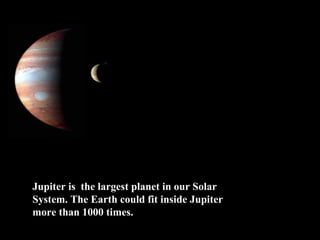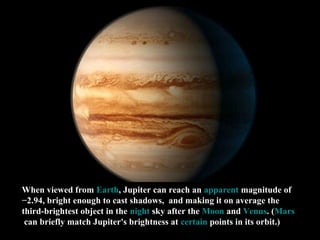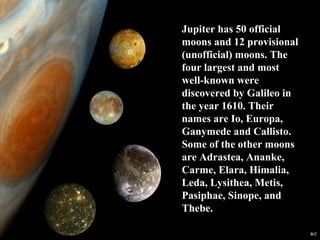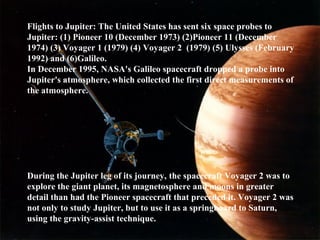Jupiter is the largest planet in the solar system, over 10 times the diameter of Earth. It is made up primarily of hydrogen and helium and has a turbulent, colorful atmosphere with the Great Red Spot, a giant storm that has raged for over 300 years. Jupiter has over 60 moons, four of which - Io, Europa, Ganymede, and Callisto - were discovered by Galileo and are some of the largest in the solar system.













